More than 46 million homes in the U.S. have a cat. For many, the joy of cat companionship is undeniable. However, for individuals with allergies, the prospect of welcoming a feline into their home can be fraught with concern. While the term “hypoallergenic cat” is often used, it’s crucial to understand what it truly means and how it relates to managing cat allergies.
What Does Hypoallergenic Cat Really Mean for Allergy Sufferers?
It’s a common misconception that some cat breeds are completely allergy-free. In reality, there is no such thing as a 100% hypoallergenic cat. All cats produce allergens, primarily the Fel d 1 protein, found in their fur, saliva, and urine. However, certain breeds, often referred to as “hypoallergenic,” produce lower levels of these proteins, making them potentially more tolerable for individuals with cat allergies.
The term “hypoallergenic” in this context means “less allergenic.” These cats may still trigger allergic reactions, but the symptoms might be less severe compared to those experienced with more allergenic breeds. For those who are determined to have a feline companion despite their allergies, exploring hypoallergenic breeds can be a viable option.
Exploring 12 Cat Breeds Considered Hypoallergenic
Choosing a cat breed known for producing fewer allergens can be a significant step in managing your allergy to cats. Before making a decision, it’s essential to spend time with the specific breed you are considering. Individual reactions can vary, and personal interaction is the best way to gauge your allergy response. Here are 12 breeds often recommended for allergy sufferers:
1. Siberian
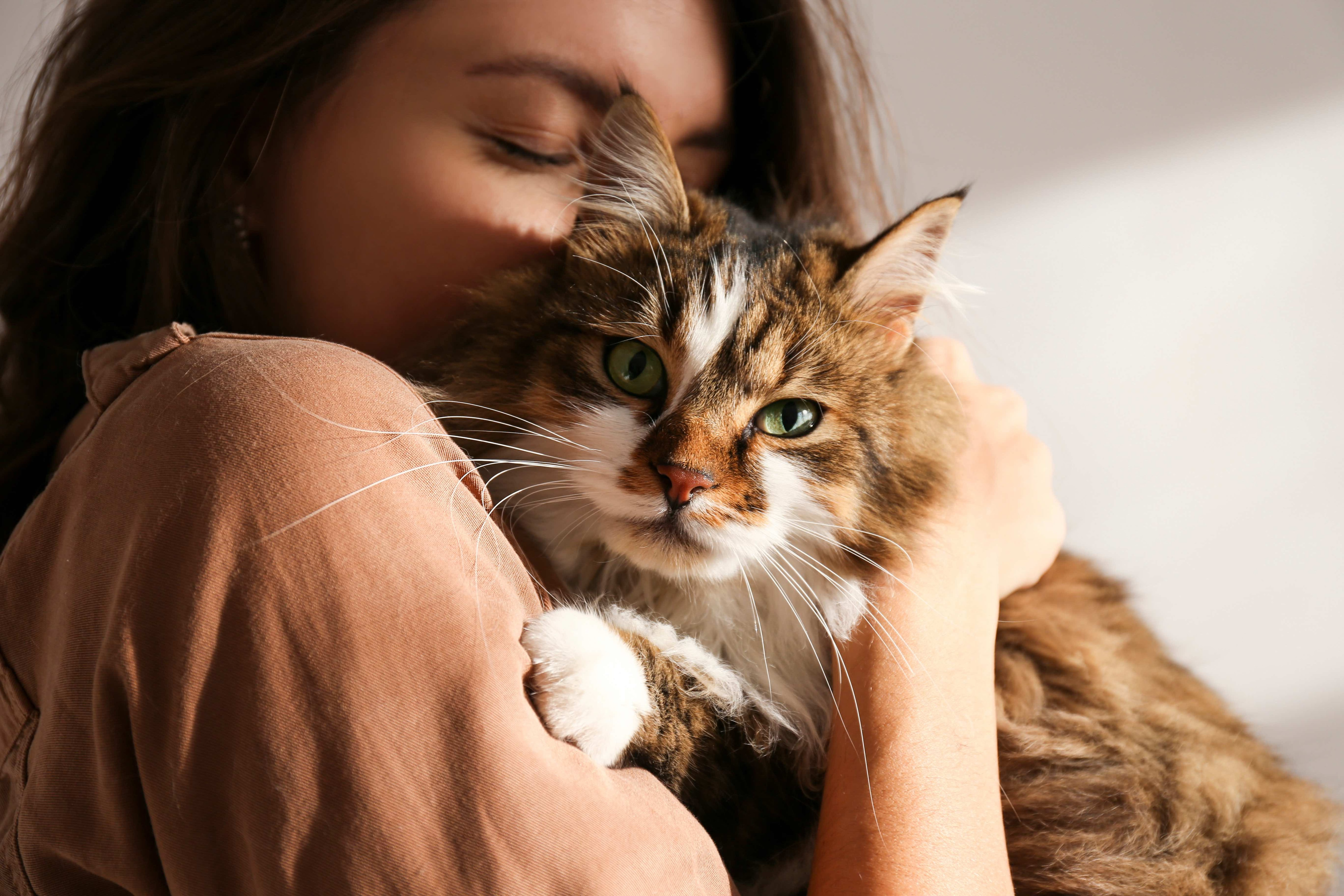 woman snuggling a longhair brown and white siberian cat
woman snuggling a longhair brown and white siberian cat
Siberian cats are frequently highlighted as a top hypoallergenic breed. Despite their luxurious, long, and thick coat, Siberians produce less Fel d 1 protein than many other cat breeds. This reduced allergen production is a significant advantage for allergy-prone individuals. Beyond their hypoallergenic qualities, Siberians are known for their friendly and affectionate nature. They are excellent family pets, integrating well into households with children and other animals. However, prospective owners should be prepared for their grooming needs. Their thick coat requires regular brushing to prevent matting and maintain its healthy condition.
2. Siamese
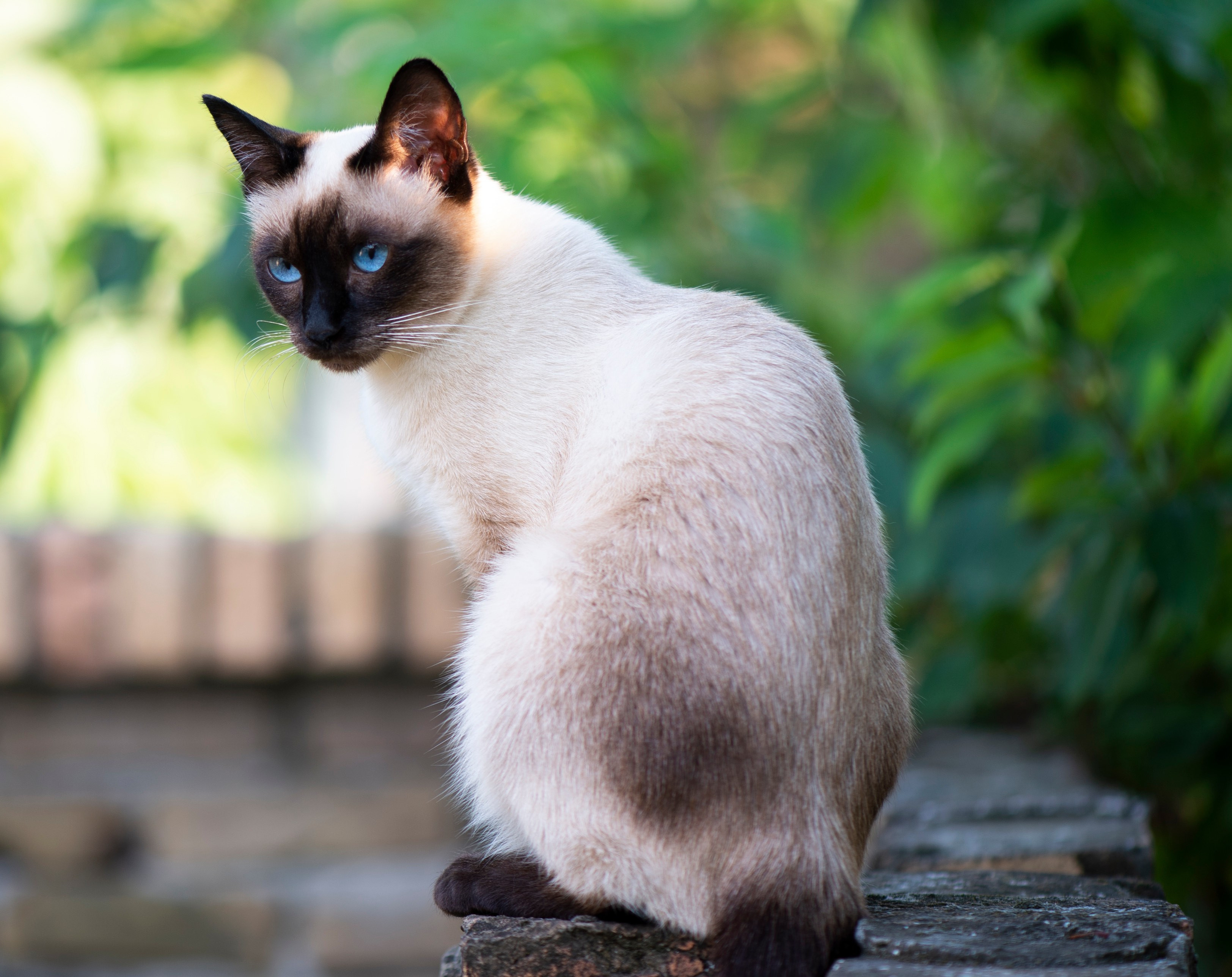 siamese cat sitting outside
siamese cat sitting outside
The Siamese cat is another breed often cited as hypoallergenic. While no cat is entirely non-shedding, Siamese cats possess a short coat that sheds minimally. This reduced shedding translates to fewer allergens dispersed into the environment. Siamese cats are renowned for their distinctive blue almond-shaped eyes and striking color points. Beyond their appearance, they are known for being highly vocal and forming strong bonds with their owners. Siamese cats thrive on attention and interaction, making them devoted companions. However, their demanding nature means they may not be suitable for households that are frequently empty. For optimal health, consulting with a veterinarian about a Siamese cat-specific food diet is recommended.
3. Bengal
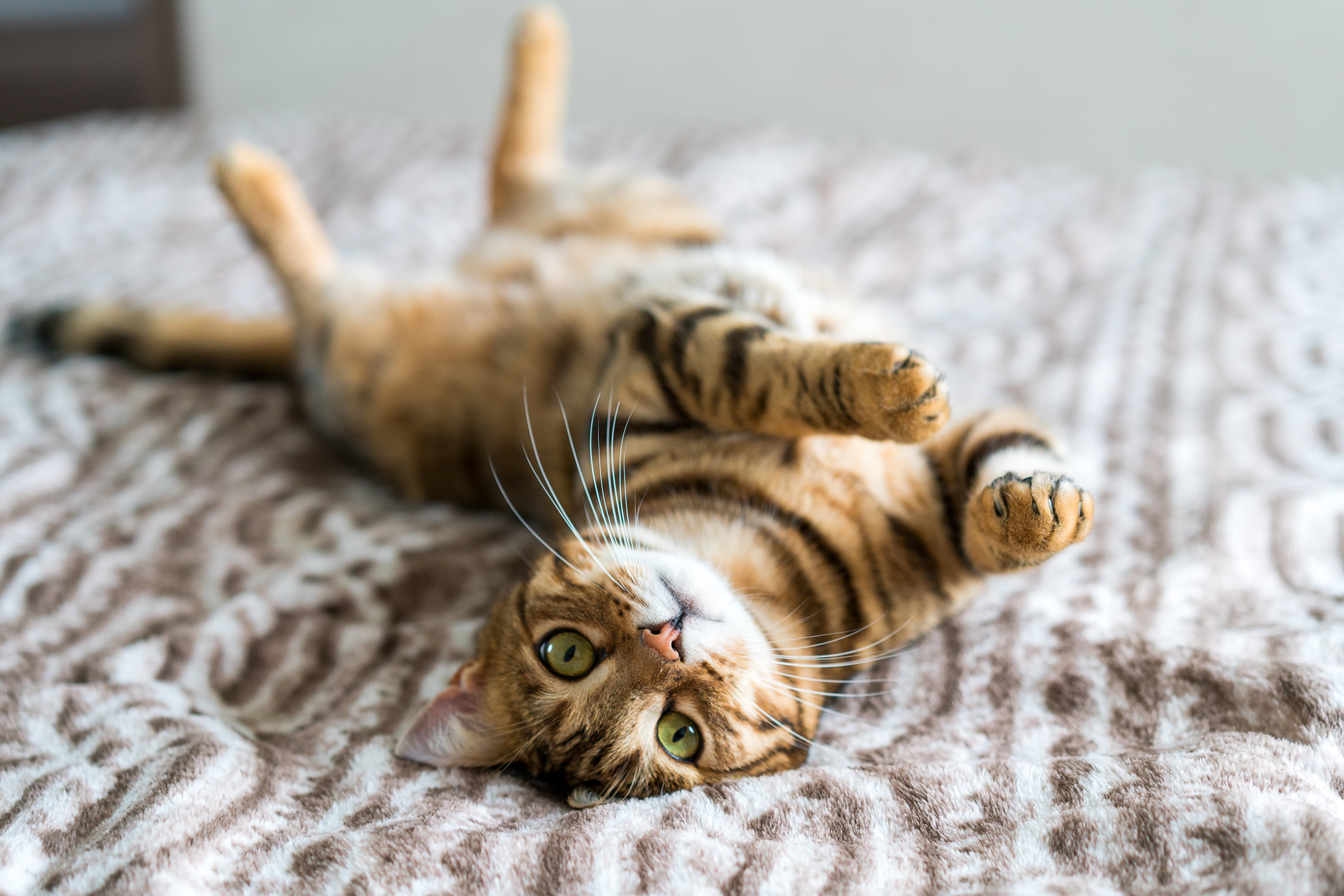 bengal cat lying on a bed on his back and showing his stomach
bengal cat lying on a bed on his back and showing his stomach
Bengal cats present a unique and striking option among hypoallergenic breeds. Their short, spotted coat, inherited from their Asian Leopard Cat ancestry, gives them a wild and exotic appearance. Similar to other hypoallergenic breeds, Bengals are known for shedding minimally, contributing to a lower allergen load in the home. However, Bengals are not just about looks; they are energetic and highly intelligent cats. This combination of traits means they require significant mental and physical stimulation. Prospective Bengal owners should be prepared for an active companion that needs plenty of playtime and interaction. It’s also worth noting that some regions have specific regulations or even bans on Bengal ownership due to their wild ancestry. Like Siamese cats, Bengals may benefit from a breed-specific cat food to meet their specific nutritional needs.
4. Russian Blue
 russian blue cat headbutting a man
russian blue cat headbutting a man
Russian Blue cats are celebrated for their hypoallergenic qualities combined with a gentle and reserved temperament. They are known for their striking silvery-blue coat and bright green eyes. Their plush, dense coat is surprisingly low-shedding, contributing to their hypoallergenic reputation. Beyond their appearance, Russian Blues are affectionate and devoted to their families. They are generally quiet cats, making them well-suited for apartment living or quieter households. While they are affectionate with their loved ones, Russian Blues can be initially shy around strangers and may take time to adjust to new environments or people. Despite being low-shedding, occasional grooming is still beneficial to maintain their coat’s health and shine.
5. Sphynx
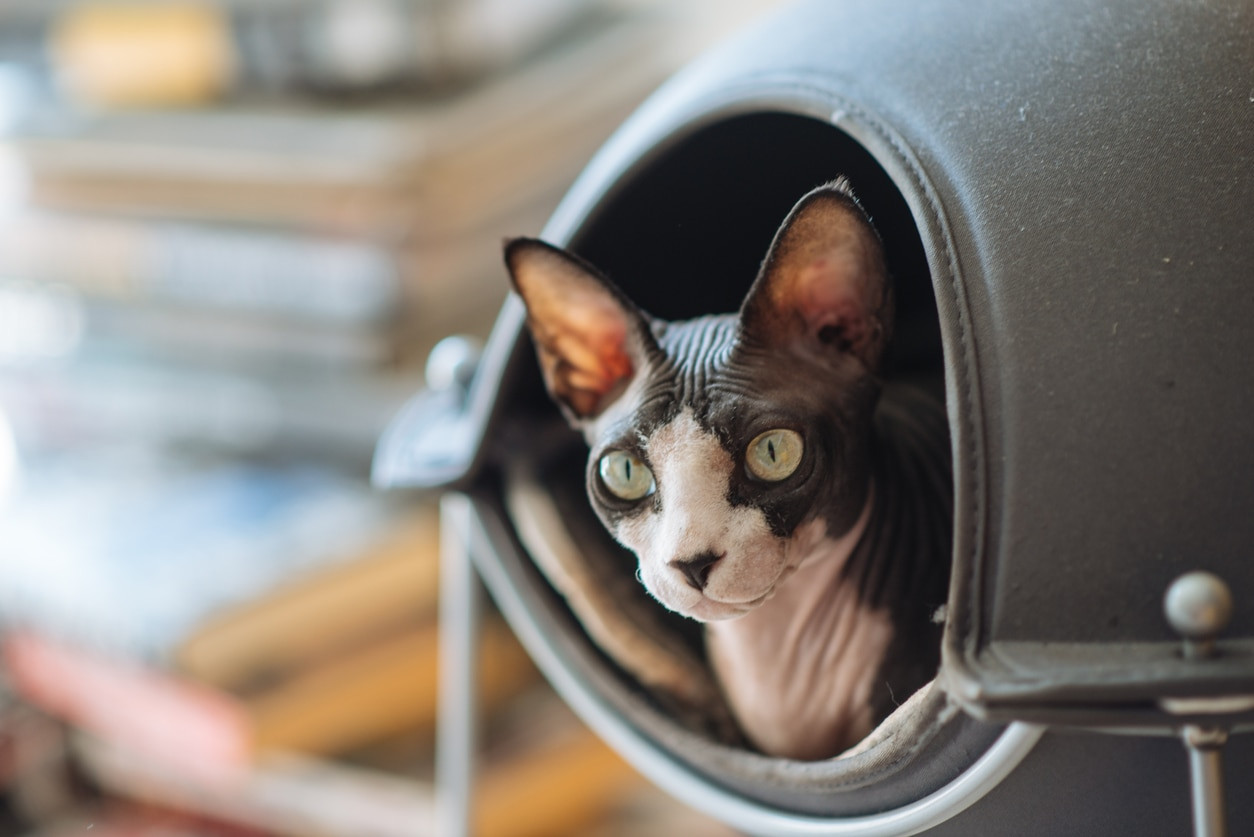 black and pink sphynx cat looking out of a covered cat bed
black and pink sphynx cat looking out of a covered cat bed
Sphynx cats are perhaps the most visually distinct breed on the list of hypoallergenic cats. Their hairless or near-hairless bodies are their defining feature. This lack of fur is the primary reason they are considered hypoallergenic, as fur is a significant carrier of allergens. Sphynx cats may have a light layer of downy fuzz, but they are largely devoid of a traditional coat. While they eliminate the issue of shedding fur, Sphynx cats still produce allergens in their skin secretions. Therefore, regular bathing is essential for Sphynx cats to remove oil buildup on their skin and minimize allergen dispersal. Beyond their unique appearance, Sphynx cats are known for their outgoing and affectionate personalities. They are often described as “velcro cats” due to their desire for close physical contact and warmth.
6. Devon Rex
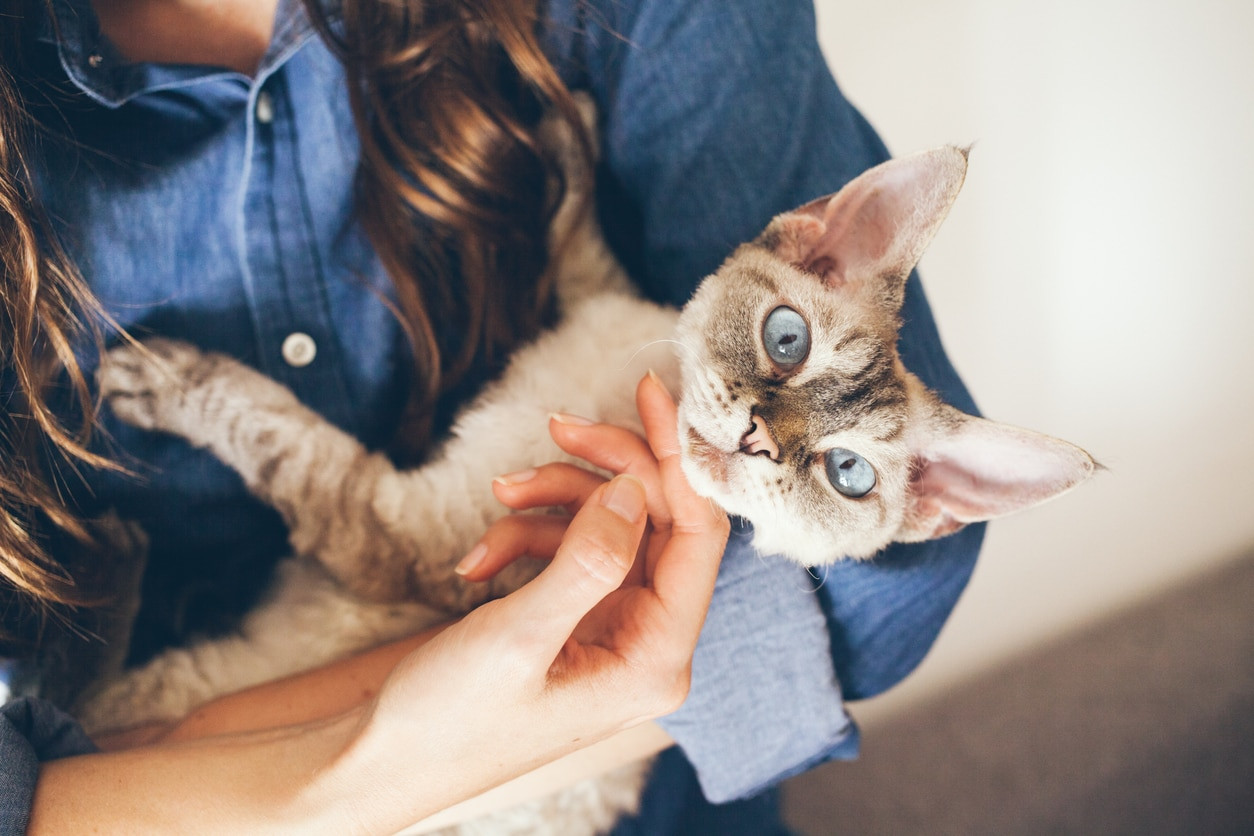 woman holding a devon rex cat like a baby
woman holding a devon rex cat like a baby
Devon Rex cats are characterized by their distinctive curly, soft coat and large ears, giving them an almost elfin appearance. Their unique coat is not only visually appealing but also contributes to their hypoallergenic nature. Devon Rex cats have less hair to shed compared to many other breeds, reducing the amount of allergens released into the environment. They are also known for being intelligent, playful, and highly affectionate. Devon Rex cats thrive on human companionship and can become very attached to their families. However, their need for attention means they may not be ideal for individuals or families who are frequently away from home for extended periods.
7. Cornish Rex
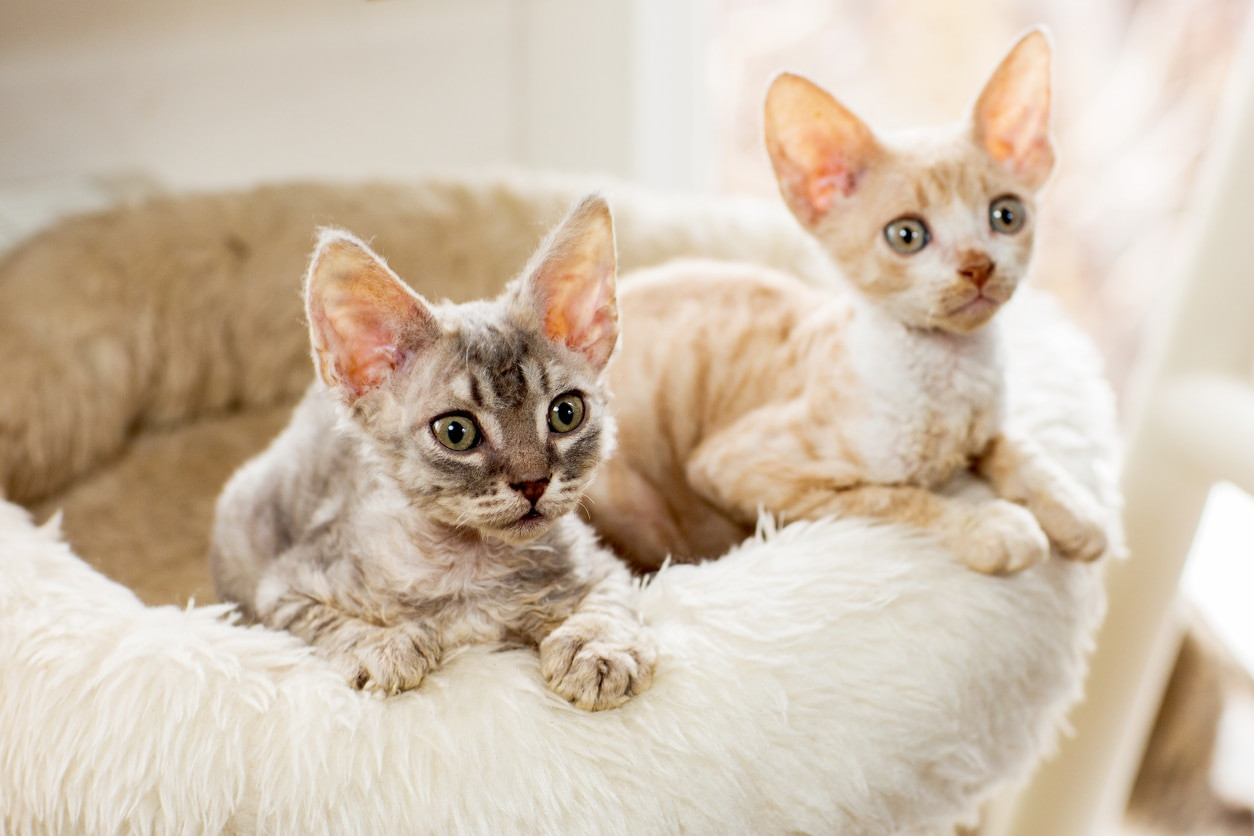 two cornish rex kittens in a cat bed
two cornish rex kittens in a cat bed
Similar to Devon Rex cats, Cornish Rex cats boast a curly coat, but their curls are tighter and closer to the body. This unique coat texture is a result of a different genetic mutation. Like their Devon Rex counterparts, Cornish Rex cats are considered hypoallergenic due to their minimal shedding. Their fine, silky coat releases fewer allergens into the home. Cornish Rex cats are known for their energetic and playful nature. They are often described as kitten-like throughout their lives, maintaining a high level of activity and curiosity. They are also very people-oriented and enjoy being the center of attention. Regular playtime and interaction are essential for Cornish Rex cats to keep them happy and healthy.
8. Javanese
 gray javanese cat mom grooming her kittens
gray javanese cat mom grooming her kittens
Javanese cats, while possessing a longer coat than some other hypoallergenic breeds, are still considered suitable for many allergy sufferers. Their single-coat, medium-length fur is silky and fine, and they lack the dense undercoat found in many breeds. This single coat contributes to less shedding and, consequently, lower allergen dispersal. Javanese cats are known for their intelligence, vocal nature, and strong attachment to their human families. They are playful and interactive cats who thrive on companionship. Despite their longer coat, they are relatively easy to groom, but regular brushing is still recommended to prevent mats and tangles.
9. Balinese
 longhaired balinese cat snuggling with a woman
longhaired balinese cat snuggling with a woman
Balinese cats are often referred to as “longhaired Siamese” due to their close genetic link and striking resemblance to Siamese cats, but with a longer, flowing coat. Despite their luxurious long hair, Balinese cats are considered hypoallergenic. Like Siamese cats, they produce lower levels of the Fel d 1 protein. Their single coat is silky and sheds less than double-coated breeds. Balinese cats share the intelligence, vocalization, and affectionate nature of Siamese cats. They are highly people-oriented and enjoy being involved in family activities. They are also known to be trainable and can learn tricks, further highlighting their intelligence and eagerness to interact.
10. Oriental Shorthair
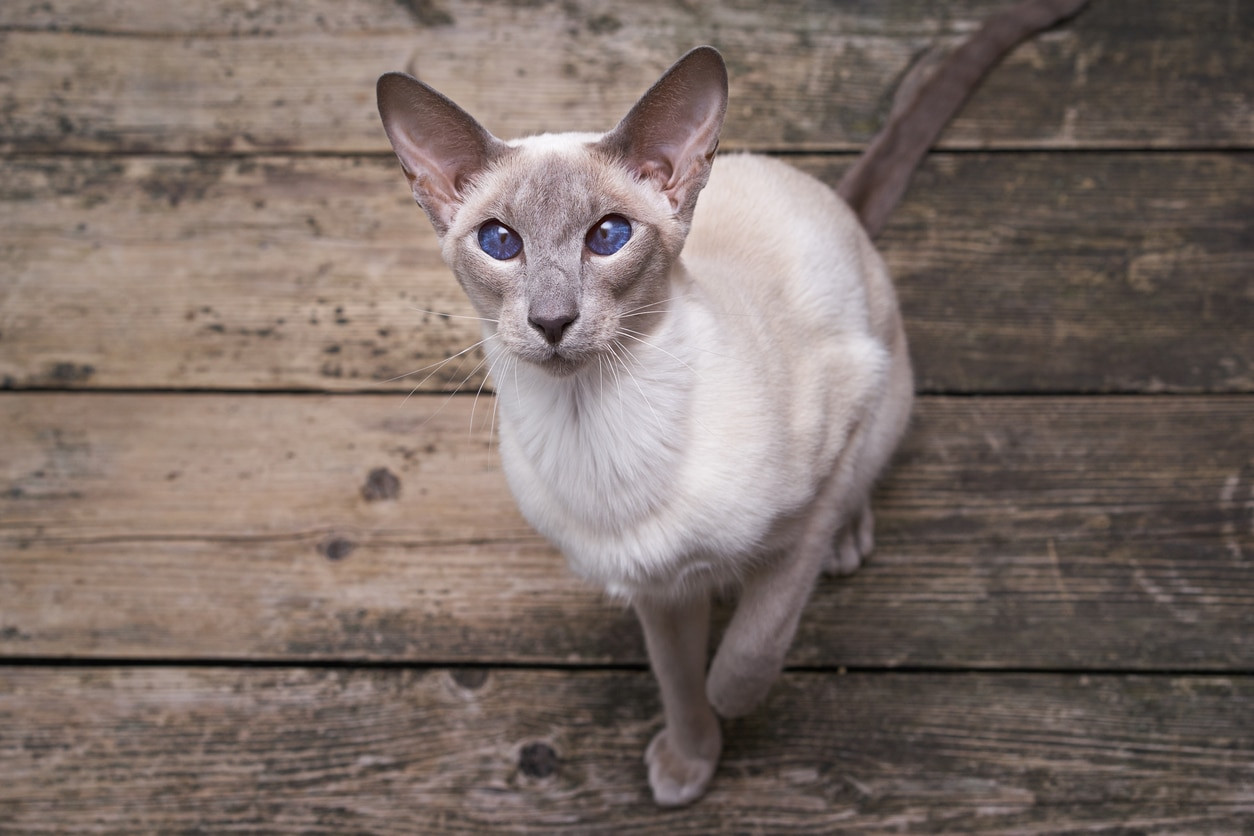 gray and white oriental shorthair cat looking up at the camera
gray and white oriental shorthair cat looking up at the camera
Oriental Shorthair cats are sleek, elegant, and known for their hypoallergenic qualities. Their short, fine coat requires minimal grooming, further reducing allergen dispersal. Oriental Shorthairs come in a vast array of colors and patterns, offering a wide variety of aesthetic choices. Beyond their appearance, they are intelligent, playful, and curious cats. They are highly social and thrive on human companionship, often following their owners around the house and engaging in interactive play. Their distinctive meow, sometimes described as a “goose honk,” adds to their unique charm.
11. Burmese
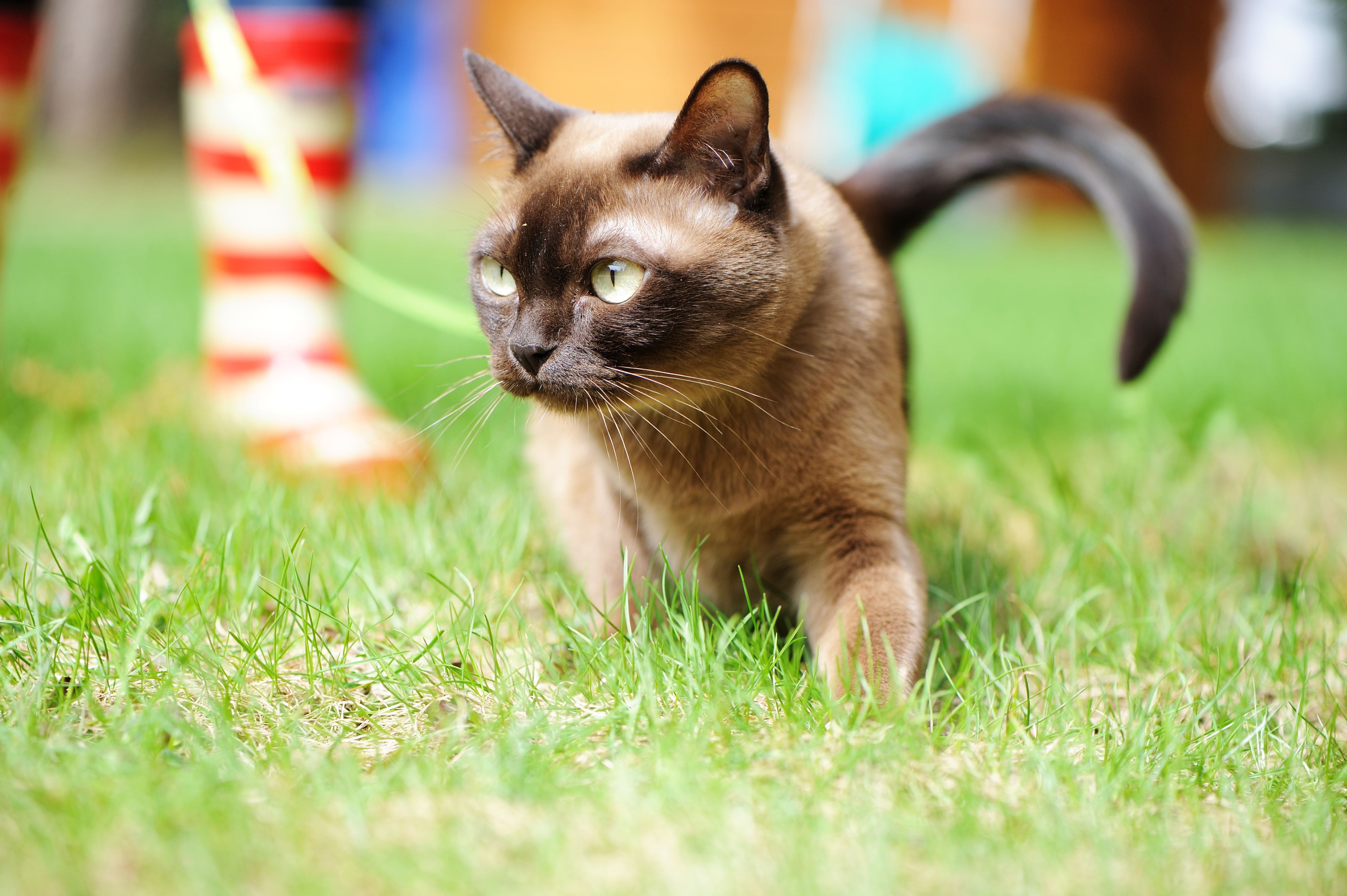 burmese cat walking on a leash and harness outside
burmese cat walking on a leash and harness outside
Burmese cats, with their short, glossy coats, are another excellent hypoallergenic breed option. Their fine, satin-like coat sheds very little and requires minimal grooming. Burmese cats are known for their affectionate and people-oriented personalities. They are often described as “velcro cats” due to their strong desire to be close to their owners. They are also intelligent and playful, enjoying interactive games and activities. Burmese cats are generally adaptable and do well in various home environments, making them a versatile choice for allergy sufferers.
12. Tonkinese
 champagne tonkinese cat sitting on the floor and looking straight at the camera
champagne tonkinese cat sitting on the floor and looking straight at the camera
Tonkinese cats are a hybrid breed, resulting from the crossbreeding of Siamese and Burmese cats. They inherit desirable traits from both parent breeds, including hypoallergenic qualities. Tonkinese cats have a short, fine coat that sheds minimally, making them a good option for individuals with cat allergies. They are known for being lively, energetic, and playful, mirroring the active nature of both Siamese and Burmese cats. Tonkinese cats are also highly social and thrive on interaction with their human families. They are intelligent and can be trained, further enhancing their appeal as engaging companions.
Practical Tips for Living with Cats When You Have Allergies
Choosing a hypoallergenic breed is just one piece of the puzzle when managing cat allergies. Regardless of the breed, implementing these strategies can further minimize your allergy symptoms:
Conduct Thorough Research and Spend Time with the Cat
Before bringing any cat home, especially a “hypoallergenic” one, in-person interaction is crucial. Allergy reactions are individual, and spending time with a specific cat will help you determine your personal tolerance level. Visit the breeder or shelter and interact with the cat to assess your allergic response.
Consult with an Allergy Specialist
Seeking advice from an allergy specialist is a proactive step in managing your allergies. An allergist can help determine the severity of your cat allergy and recommend appropriate strategies, which may include medication or allergy immunotherapy, to manage your symptoms effectively.
Maintain a Clean Home Environment
Regular cleaning is paramount in reducing allergens in your home. While hypoallergenic cats shed less, they still produce dander and saliva allergens. Vacuuming frequently, especially carpets and upholstery, dusting surfaces regularly, and washing bedding and curtains can significantly reduce allergen accumulation. Consider using HEPA filters in your vacuum cleaner and air purifier to trap airborne allergens.
Discuss Dietary Options with Your Veterinarian
Innovative cat food options, such as Purina® Pro Plan® LIVECLEAR, are formulated to reduce the major cat allergen, Fel d 1, in cat saliva. This dietary approach can be a valuable addition to your allergy management strategy. Consult with your veterinarian to determine if this type of food is suitable for your cat and your allergy needs.
Frequently Asked Questions About Cat Allergies and Shedding
Are there truly non-shedding cats for allergy sufferers?
While Sphynx cats are often described as non-shedding due to their lack of fur, it’s important to remember that all cats produce allergens. Even hairless cats produce allergens in their skin, saliva, and urine. The absence of fur simply means that the allergens are not trapped in and dispersed by shedding hair, but they are still present.
Can a cat ever be 100% hypoallergenic and eliminate allergies?
No, the concept of a 100% hypoallergenic cat is a myth. All cats produce allergens to varying degrees. Hypoallergenic breeds produce fewer allergens, but they are not allergen-free. Managing cat allergies requires a multi-faceted approach, including breed selection, environmental control, and potentially medical management.
WRITTEN BY
Nicole Zittritsch, LVT, BSc, MPH
Veterinarian Technician
